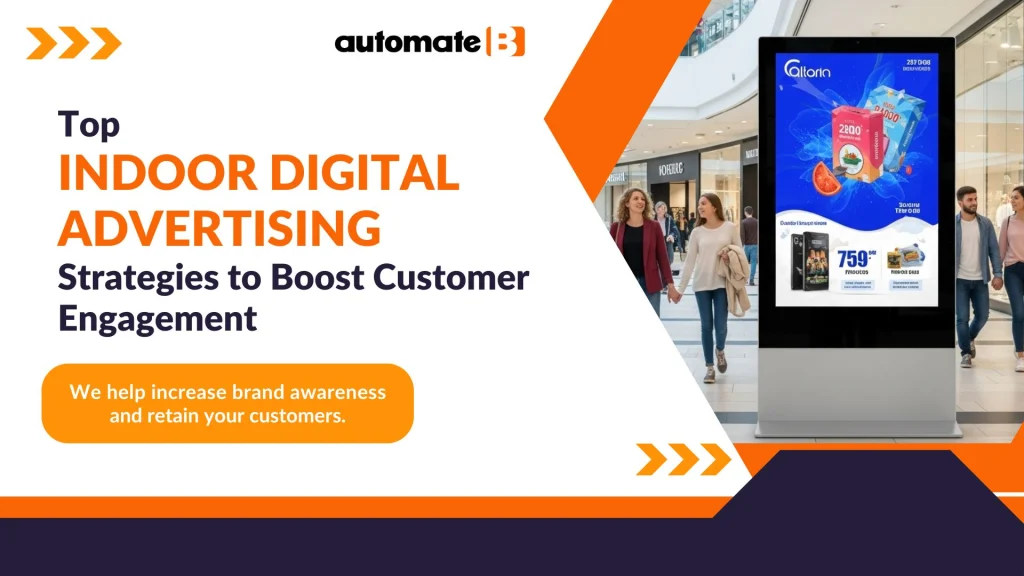
Top Indoor Digital Advertising Strategies to Boost Customer Engagement
You’re casually making your way into the mall. No rush, no buying plans — just aimless looking around and staring. Then, out of nowhere, this digital screen flashes up: Limited-time combo just ₹149. Offer ends in 90 seconds. No salesperson. No printed flyer. One screen, one countdown, and one perfectly timed message. You directly scan that QR code, place your order, and now you are indeed a customer. Now, that’s a rather clever marketing feat. That is indoor digital advertising that none really reveals.
These days, smart digital display screens do everything to create engagement, influence, and convert. In places like malls, cafés, gyms, and clinics, indoor digital displays are growing into silent brand ambassadors; these indoor digital advertising strategies create a real-time interaction that feels personal, relevant, and effortless.
Also Read: Top 10 Digital Signage Trends you need to watch in 2025
Top Indoor Digital Advertising Strategies to Boost Customer Engagement
When indoor digital advertising is used creatively, the advertisement could easily blend into the world so well that it feels less like marketing and more like some great advice. Here are some of the best strategies brands use to increase engagement, influence purchase decisions, and forge lasting impressions.
1. Dynamic Content Scheduling
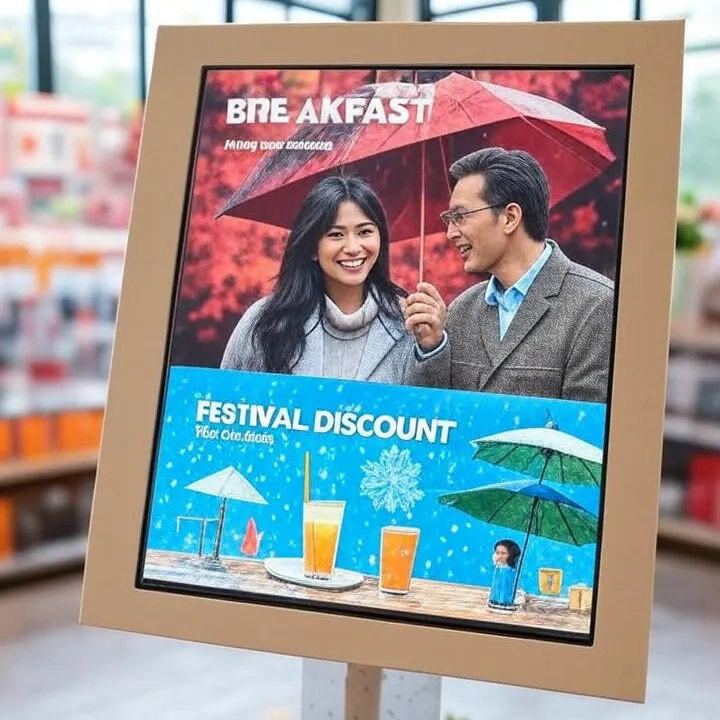
The essence of any digital display screen lies in its adaptability. Through dynamic scheduling, brands hold the power to change messages across the day: from breakfast promotions in the morning to discount offers for the festivals at night.
Example: A retail store promotes umbrella deals during a rainy afternoon and winter wear when temperatures drop.
2. Interactive Touchscreens
Touchscreen kiosks turn curiosity into interaction. Customers are no longer merely looking; they are actively participating in the experience, whether it be through catalogue browsing, quick quizzes, or store maps.
Example: A touchscreen in a furniture store allows customers to drag and drop pieces onto a digital blueprint to create their own room arrangement.
Also Read: Inspiring Gymnasium Signage Ideas That Keep Members Coming Back
3. QR Code Integration
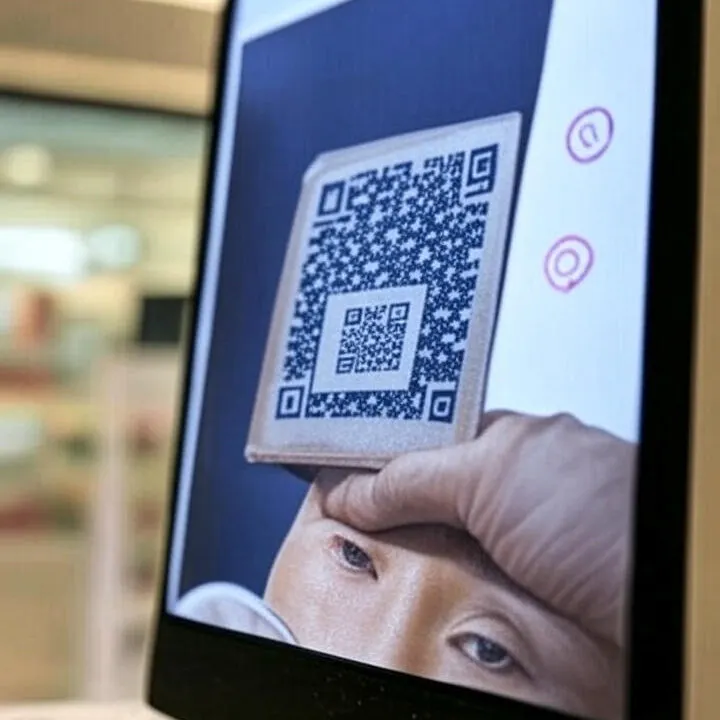
QR Codes deliver the speed and accuracy that the consumers expect. With just one scan, customers can quickly access offers, product details, loyalty sign-ups, and even complete purchases.
Example: A beauty brand showcasing a new skincare line with a QR code that links to an exclusive YouTube tutorial or virtual try-on tool.
4. Social Media Walls
Live social media platforms showing trendy and most viral posts or the reels to boost the engagement within the consumers or the visitors. It also encourages the customers to post online so that they can also get featured.
Example: A cafe digital displays an Instagram wall with posts tagged #BrewWithUs. Customers snap photos just to see themselves featured.
Also Read: 500+ Creative Signage for Hospital to Improve Patient Experience Instantly
5. AI – Powered Personalization
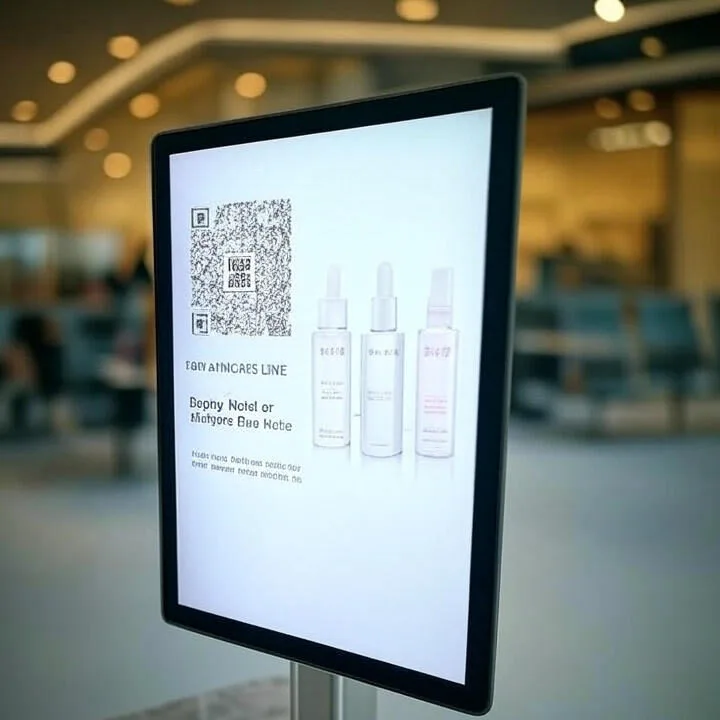
With AI engagement the digital screens can react to traffic, time, and even the demographic in front of them. Consider the AI personalisation for the content to automatically adjust and engage the visitors and consumers.
Example: A gym screen that can identify when a lot of people are leaving and advertise protein drinks or exercise classes during those times.
Each strategy adds a layer of value to the customer journey from dynamic messaging and gamified moments to interactive experiences.
Also Read: Maximizing Business Impact: The Power of Real Estate Digital Signage in Commercial Properties
Why Indoor Digital Advertising Works?
In an era, where attention span is shrinking as people are bombarded with the content all the time, indoor digital advertising offers a fresh, effective way to connect with your audience in a meaningful and measurable way.
Indoor digital advertisements are typically placed within environments that have potential to be high traffic, high dwell time environments like malls, restaurants, gyms, airports, clinics, and schools. These are environments where consumers usually stop, take notice, and are in a position and a mind-set to engage with the messaging around them that’s how indoor digital advertising works:
1. Captive Audience with Longer Attention Stands
Indoor environments are unique as the setting inherently creates moments of stillness, with people seated, browsing, waiting or just killing time.
Whether it is a customer being serviced in a salon, a traveller in an airport lounge or the shopper standing in line, they’re not really in a hurry. In that idle teaching brands can share valuable, visually engaging, well-timed content that will be noticed and remembered.
2. Added Distraction = Visibility

An advertisement in an outdoor setting usually has dozens of distractions: honking traffic, changing weather, clutter of other advertisements, moving pedestrians. Indoors digital advertising has a more controlled atmosphere.
Lighting, location and screen quality can be elevated – this Dress makes it easier for the audience to focus in. Indoor advertising gives brands a clean canvas where all other content is not competing but enhancing the offer.
Also Read: How Conference Signage is Revolutionizing conferences and Trade Shows
3. Modern, Tech-Friendly Brand Image
When brands showcase a digital display, storytelling leveraging motion graphics, and touch-enabled kiosk experience, they are completely perceived as modern and innovative.
In a rapidly digitizing world, consumers are attracted to businesses that use technology, both to enhance their functional experience but to enhance their overall experience. Having Digital Signage internally communicates a brand that is savvy, able to pivot their experience, and in tune with their audience.
4. High Traffic and Right Place
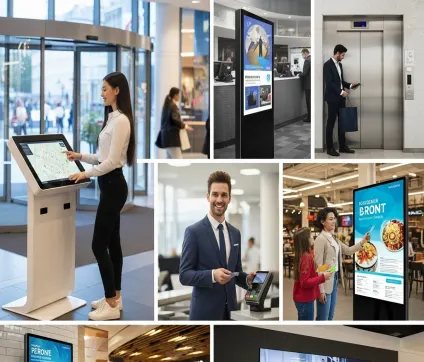
Popular indoor spaces attract people all the time. Simple Digital Signage that is placed at entrances, cash areas, elevators, food courts, or lounge areas may have the most visibility.
This is truly the beauty of simple digital signage and being in the right place at the right time; the place of decision making, when purchases are contemplated, where the customer is being entertained, or relaxing.
Also Read: Why Signage for Hotels is Key for Modern Hospitality Experiences
5. Drives Action with Impulsive Interactivity
Digital signs can take a passer-by’s brief glance and curiosity and turn it into action. Think big, think engaging, whether it is a very visible product demo or strategically placed QR codes for a quick discount.
Simple Digital Signage will have the easiest engagement with your customers through a quick scan (which itself is an impulse) allowing customers to subscribe, order, follow a page, or learn more about the product.
6. Increases Brand Recall – Emotional Attachment

Indoor advertising that is well-designed – particularly value-added ads that effectively use visuals, movement and story to engage the viewer – convey strong emotional impressions.
Think of the difference between running a looping video of customer testimonials against the backdrop of a flash sale countdown and a quote, some inspiring quote in a gym, etc. We are after the content embedded in our customers memory far longer than a poster could ever replace.
Also Read: The Growing Need for Digital Signage Software
Conclusion
Let’s be honest — indoor digital advertising is no longer just about placing digital displays inside of a location, about how effectively you leverage those digital screens to capture the audience’s attention, create a dialogue, and drive action — and you can do all of this without words.
Whether it’s a QR code that can be scanned in seconds, a flash offer that inspires instant FOMO, or dynamic content that creates change with the hour — it is these small interactions that leave a large impression.
With real-time scheduling, easy changes to content, and a platform purposefully designed with engagement in mind, automateB turns your screens into connected storytellers — storytellers that never stop telling a story, just like your brand should.
FAQ’s
1. What is indoor advertising?
Indoor advertising promotes products or services inside enclosed spaces like malls, airports, gyms, or restaurants to reach targeted audiences.
2. What is DOOH in advertising?
DOOH stands for Digital Out-of-Home advertising — it uses digital screens in public places to display dynamic, real-time ads.
3. Why does the media indoors advertise?
Indoor spaces offer a captive audience, better targeting, and longer viewing time, making ads more impactful and memorable.
4. What is the difference between DOOH and OOH?
OOH (Out-of-Home) includes all outdoor ads like billboards and posters, while DOOH (Digital Out-of-Home) is the digital version using LED or LCD screens for interactive, real-time content.
